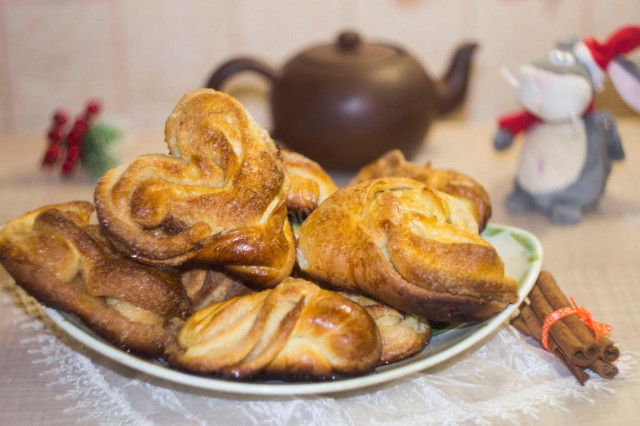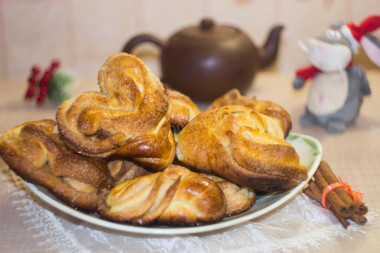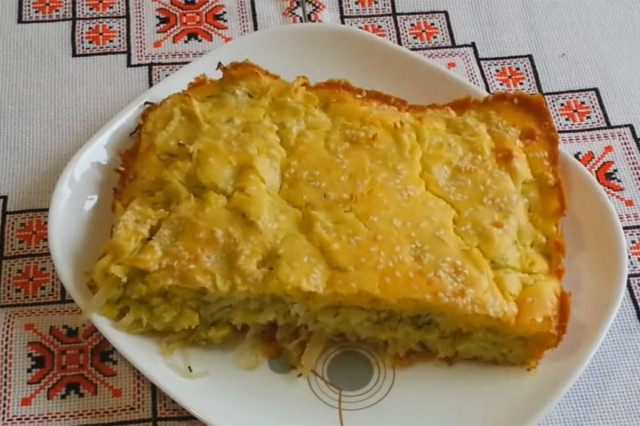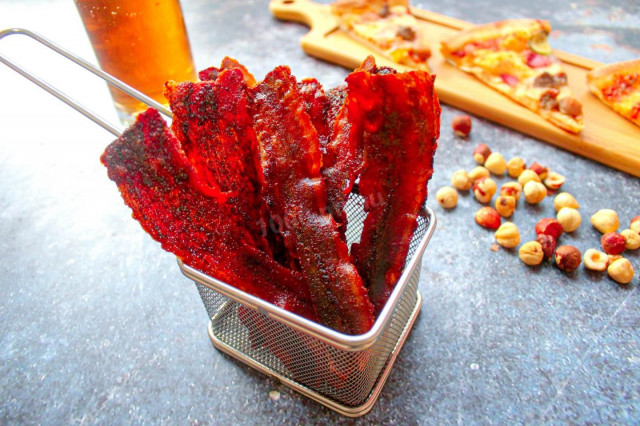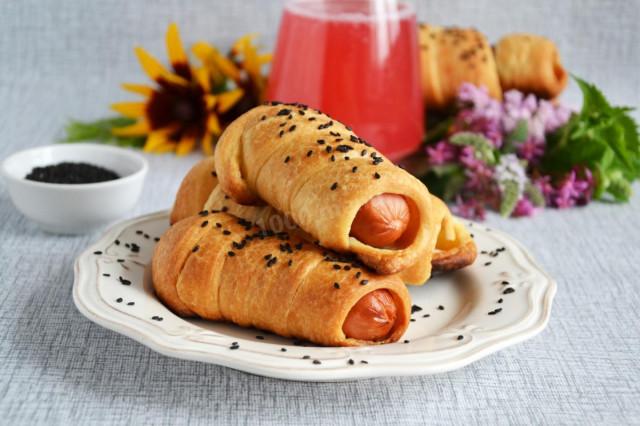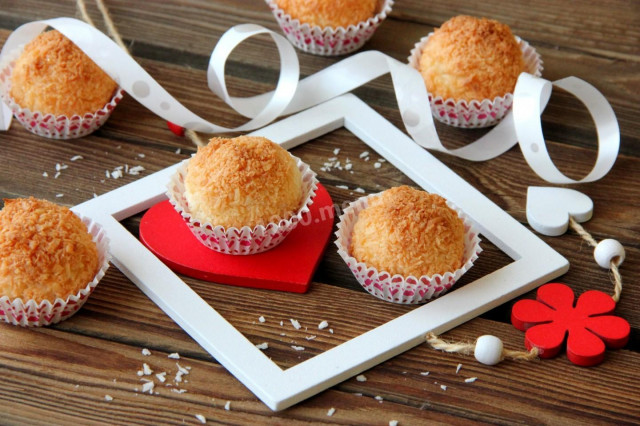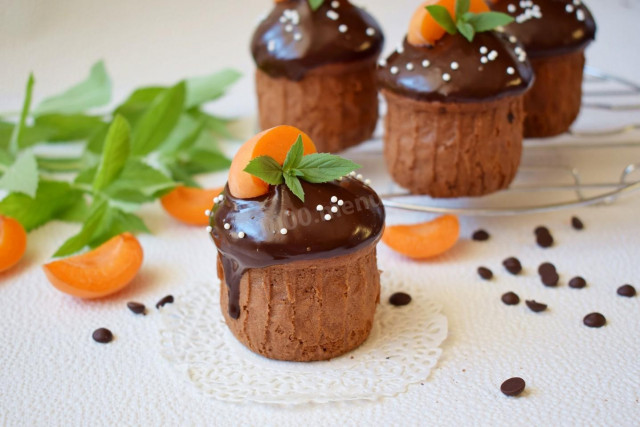Composition / ingredients
Step-by-step cooking
Step 1:
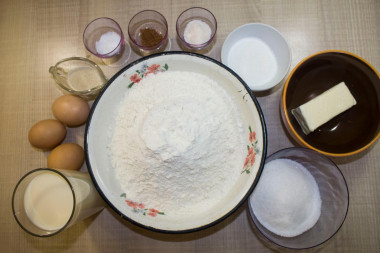
Prepare all the necessary ingredients. Take wheat flour of the highest grade, the quality of baking will largely depend on this. Be sure to sift to saturate it with oxygen. Then the baking will turn out lush and light. Also note that flour differs in its properties, because it may need more or less than indicated in the recipe. You can read more in the article, the link to which you will find at the end of the recipe.
Step 2:
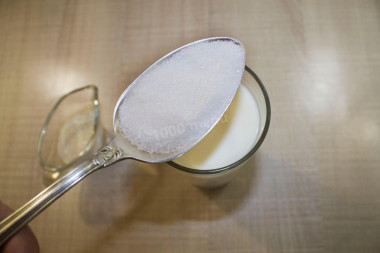
Warm up the milk. It should be pleasant to the touch (no more than 40 degrees), in no case hot. Why is this important? In a warm environment, yeast is activated, in a hot environment they will simply die, and in a cold environment they will not wake up. Pour 1 tablespoon of sugar into the milk, stir. Sugar crystals should dissolve.
Step 3:
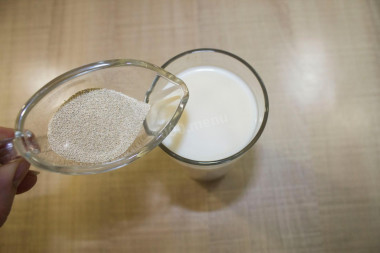
Add dry yeast. Mix it up.
Step 4:
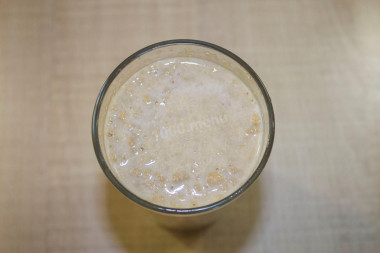
Cover the yeast container with a kitchen towel and leave it in a warm place for 15 minutes to make the yeast work. During this time, a foamy yeast cap should form on the surface of the sponge. If this did not happen, then the yeast is expired or spoiled. In this case, I recommend taking other yeast, otherwise the buns will not turn out and your work will be in vain.
Step 5:
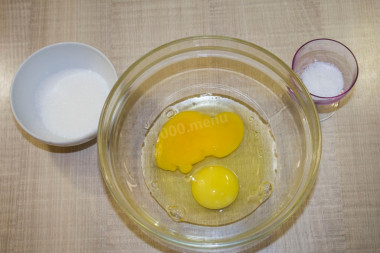
In a separate bowl, mix 2 eggs, 2 tablespoons of sugar (or a sweetener that is not afraid of heat treatment) and a pinch of salt.
Step 6:
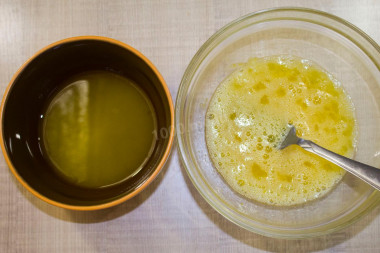
Melt butter in a water bath or in the microwave (read the instructions for your device). Cool and add to the egg mixture. How to melt butter in a water bath? You will need two containers of different diameters. Pour water into a large one. Place the smaller container on top so that it is immersed in water for about half. Put the chopped butter in it. Under the influence of boiling water, it will begin to melt. When it becomes liquid, turn off the heat.
Step 7:
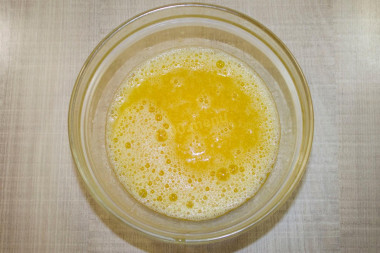
Stir the mixture with a whisk until smooth.
Step 8:
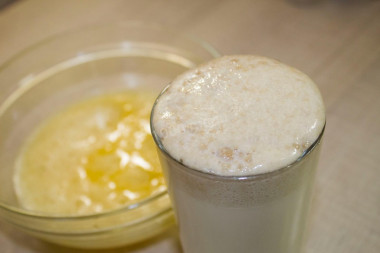
Combine egg-butter mixture with yeast. Mix it up.
Step 9:
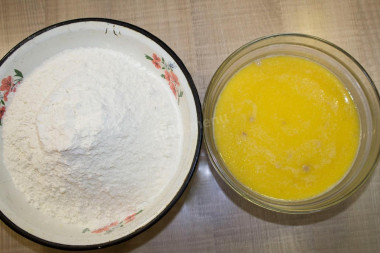
Pour the sifted flour into this liquid mixture in parts. Knead the dough. If necessary, add a little flour or, conversely, reduce its amount. Focus on the desired soft consistency of the dough.
Step 10:
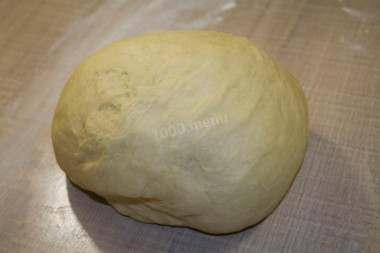
It should be kneaded for a long time, about 10-15 minutes, until the dough stops sticking to your hands. A well-kneaded dough will be smooth, elastic and obedient.
Step 11:
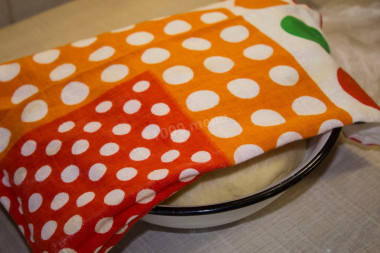
Cover the bowl with a kitchen towel and put it in a warm place for 1 hour.
Step 12:
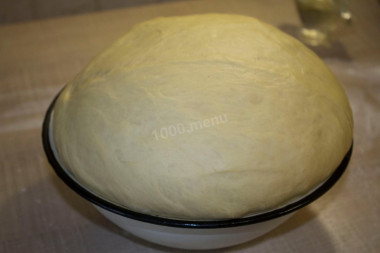
The dough will increase by about 2 times during this time. Then knead it to expel excess carbon dioxide, which slows down the fermentation process and leave it for another 30 minutes to rise.
Step 13:
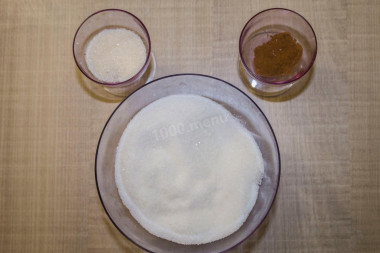
In a bowl, mix sugar with vanilla sugar and ground cinnamon. Vanilla sugar can be replaced with vanillin (at the tip of the knife). It is important to read the instructions before use, so as not to spoil the baking. If you throw more vanilla than you need, the taste of the buns will be bitter.
Step 14:
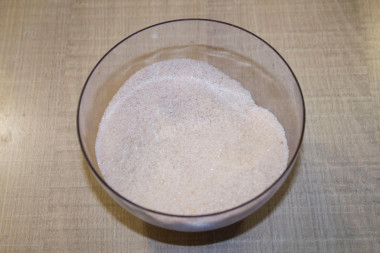
The filling is ready.
Step 15:
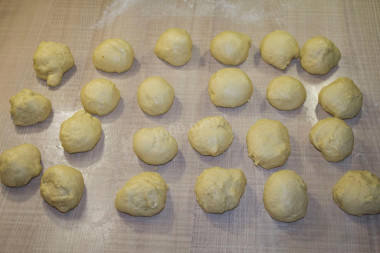
When the dough is suitable for the second time, knead it a little and divide it into small balls. It should turn out about 22 pcs.
Step 16:
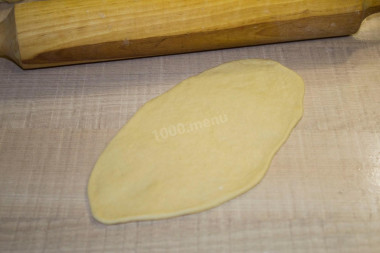
Roll out each ball into a thin oval (about 2-3 mm thick).
Step 17:
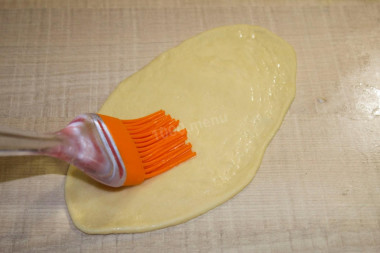
Lightly lubricate the surface of the dough layer with refined vegetable oil.
Step 18:
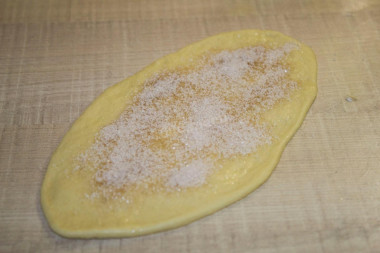
Sprinkle with the sugar mixture.
Step 19:
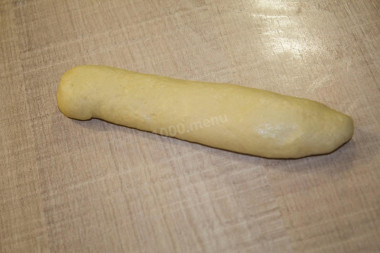
Twist the tube tightly and pinch the ends so that the sugar does not spill out.
Step 20:
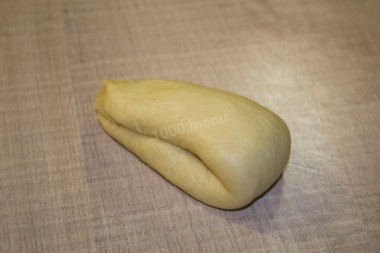
Fold the roll in half. At the bend, make an incision up to half.
Step 21:
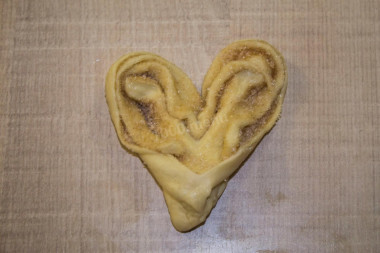
Expand the slice upwards. It will turn out like this heart (as in the photo).
Step 22:
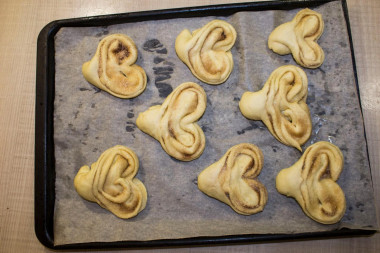
Cover the baking sheet with oiled baking paper. Lay out the blanks at some distance from each other, as they will increase decently in size during the baking process. Leave them for proofing for 15 minutes.
Step 23:
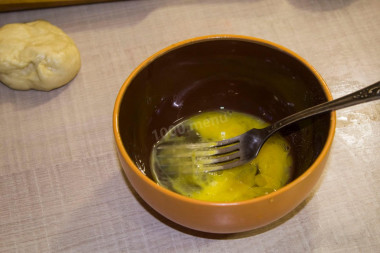
In a container, lightly beat one egg with a fork.
Step 24:
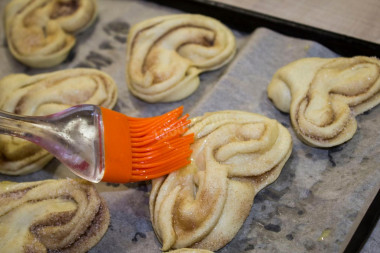
Before baking, brush the buns with egg using a silicone brush.
Step 25:
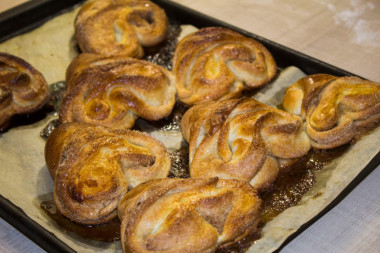
Preheat the oven to 200 degrees in advance (10-15 minutes before baking). Bake the buns for about 20-25 minutes. I got 3 batches. Focus on the features of your oven. The baking time and temperature may vary. When the buns become ruddy, grow up, check their readiness with a wooden toothpick. Pierce the pastry. If the toothpick came out dry, then it's done!
Step 26:
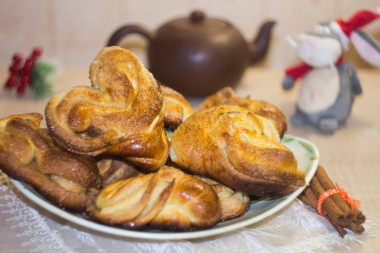
Take out the baking tray. While it cools down, brew fragrant tea. Transfer the rolls with sugar and cinnamon to a platter. If you want, sprinkle it with powdered sugar on top. Help yourself. Have a nice tea party!
Buns can be formed in another way. How to make a particular shape you can learn from other similar recipes, by following this link
Be prepared for the fact that flour may need a little more or less than indicated in the recipe. You need to focus on how the dough should turn out (dense, soft, liquid, etc.). There is a lot of useful information about why flour, even of the same variety, can have completely different properties, read here
Keep in mind that everyone's ovens are different. The temperature and cooking time may differ from those specified in the recipe. To make any baked dish successful, use useful information in the article about ovens here
Important! Using dry yeast, it should be borne in mind that they occur in two forms: active and instant (read the instructions carefully before use!).
Active dry yeast looks like beads or small balls. Before applying them, they must be brought out of the "sleep mode". To do this, the active yeast is diluted in warm sweet water, milk or whey. The resulting bubbles, foam or "cap" indicate that the yeast is ready for further use. Active dry yeast must be brought to complete dissolution in the liquid, otherwise, due to the remaining grains, the dough may not rise and the baking will be spoiled (yeast grains that have not dissolved in the liquid and got into the dough will not disperse on their own, which means they will not work).
Instant dry yeast is easier to use. They do not need to be activated before use. Such yeast, along with other ingredients, is simply added to the dough. As a result, the baking time is reduced.
It should also be remembered that both types of dry yeast may differ in their activity from different manufacturers.
Caloric content of the products possible in the composition of the dish
- Whole cow's milk - 68 kcal/100g
- Milk 3.5% fat content - 64 kcal/100g
- Milk 3.2% fat content - 60 kcal/100g
- Milk 1.5% fat content - 47 kcal/100g
- Concentrated milk 7.5% fat content - 140 kcal/100g
- Milk 2.5% fat content - 54 kcal/100g
- Chicken egg - 157 kcal/100g
- Egg white - 45 kcal/100g
- Egg powder - 542 kcal/100g
- Egg yolk - 352 kcal/100g
- Ostrich egg - 118 kcal/100g
- Cinnamon - 247 kcal/100g
- Granulated sugar - 398 kcal/100g
- Sugar - 398 kcal/100g
- Butter 82% - 734 kcal/100g
- Amateur unsalted butter - 709 kcal/100g
- Unsalted peasant butter - 661 kcal/100g
- Peasant salted butter - 652 kcal/100g
- Melted butter - 869 kcal/100g
- Vegetable oil - 873 kcal/100g
- Wheat flour - 325 kcal/100g
- Vanilla sugar - 379 kcal/100g
- Chicken egg - 80 kcal/100g
- Table salt - 0 kcal/100g
- Dry yeast - 410 kcal/100g

